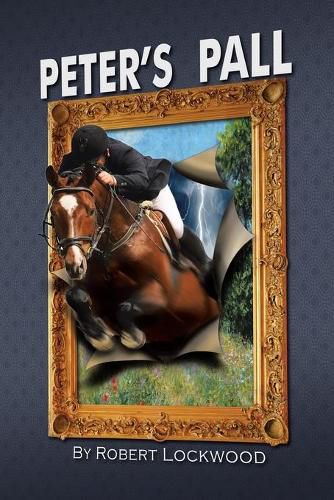Readings Newsletter
Become a Readings Member to make your shopping experience even easier.
Sign in or sign up for free!
You’re not far away from qualifying for FREE standard shipping within Australia
You’ve qualified for FREE standard shipping within Australia
The cart is loading…






This title is printed to order. This book may have been self-published. If so, we cannot guarantee the quality of the content. In the main most books will have gone through the editing process however some may not. We therefore suggest that you be aware of this before ordering this book. If in doubt check either the author or publisher’s details as we are unable to accept any returns unless they are faulty. Please contact us if you have any questions.
The story balanced two major issues–the Museum of Restituted Art and the Hampton Classic. Accordingly, information was liberally secured from the related sources: those pertaining to the equestrian world and to the immense amounts of literature and numbers of organizations seeking resolutions of ownership of looted art.
The Hampton Classic, this having been its forty-first year, continues to involve founding members who modestly revere its evolution as if one’s own favored child and who shrink only from promoting and individually acknowledging themselves over the hundreds of other committed equestrians that have elevated the horse show to such international prominence.
No such anonymity attaches to the individuals, institutions, and organizations struggling for justice regarding Nazi-looted art. Theirs is to make known to all potential claimants that they stand ready to storm the gates to rightful recovery of their legacies.
Regrettably, the United States of America, home to many such claimants, has not been able to properly reconfigure the mosaic of conflicting interests that hinder justice. Despite well-meaning conferences, laws, and even institutionalized governmental efforts, America stands well behind modern Germany, for example, as an inviting beacon.
Even the early Washington Conference of 1998 would plead, but neither demand nor ever enforce laws, rules, and regulations compelling museums to provide a fair and just solution to Nazi-era claimants. The 1970 UNESCO baseline principles find no receptivity here. The FBI’s own National Stolen Art File (NSAF) is largely ignored by holders of Nazi assets. Vacuous files, such as that of the Nazi-Era Provenance Internet Portal (NEPIP), intended to be the sine qua nonregistry, gives the viewer a feeling of entertainment without a punch line. The ethical guidelines of the American Association of Museums (AAM) reads more like a childish time-out lecture than a serious behavioral code.
What then is there to acknowledge? In a word–failure.
$9.00 standard shipping within Australia
FREE standard shipping within Australia for orders over $100.00
Express & International shipping calculated at checkout
This title is printed to order. This book may have been self-published. If so, we cannot guarantee the quality of the content. In the main most books will have gone through the editing process however some may not. We therefore suggest that you be aware of this before ordering this book. If in doubt check either the author or publisher’s details as we are unable to accept any returns unless they are faulty. Please contact us if you have any questions.
The story balanced two major issues–the Museum of Restituted Art and the Hampton Classic. Accordingly, information was liberally secured from the related sources: those pertaining to the equestrian world and to the immense amounts of literature and numbers of organizations seeking resolutions of ownership of looted art.
The Hampton Classic, this having been its forty-first year, continues to involve founding members who modestly revere its evolution as if one’s own favored child and who shrink only from promoting and individually acknowledging themselves over the hundreds of other committed equestrians that have elevated the horse show to such international prominence.
No such anonymity attaches to the individuals, institutions, and organizations struggling for justice regarding Nazi-looted art. Theirs is to make known to all potential claimants that they stand ready to storm the gates to rightful recovery of their legacies.
Regrettably, the United States of America, home to many such claimants, has not been able to properly reconfigure the mosaic of conflicting interests that hinder justice. Despite well-meaning conferences, laws, and even institutionalized governmental efforts, America stands well behind modern Germany, for example, as an inviting beacon.
Even the early Washington Conference of 1998 would plead, but neither demand nor ever enforce laws, rules, and regulations compelling museums to provide a fair and just solution to Nazi-era claimants. The 1970 UNESCO baseline principles find no receptivity here. The FBI’s own National Stolen Art File (NSAF) is largely ignored by holders of Nazi assets. Vacuous files, such as that of the Nazi-Era Provenance Internet Portal (NEPIP), intended to be the sine qua nonregistry, gives the viewer a feeling of entertainment without a punch line. The ethical guidelines of the American Association of Museums (AAM) reads more like a childish time-out lecture than a serious behavioral code.
What then is there to acknowledge? In a word–failure.